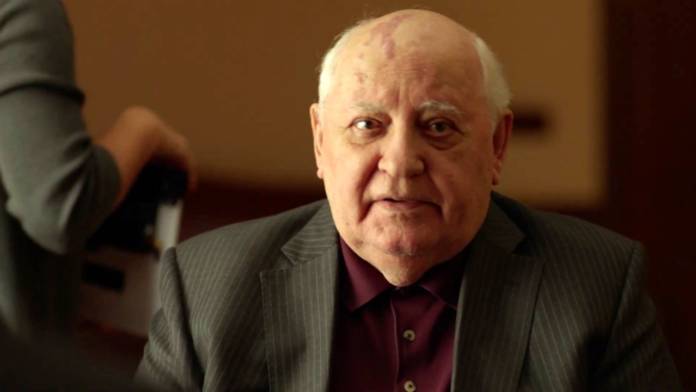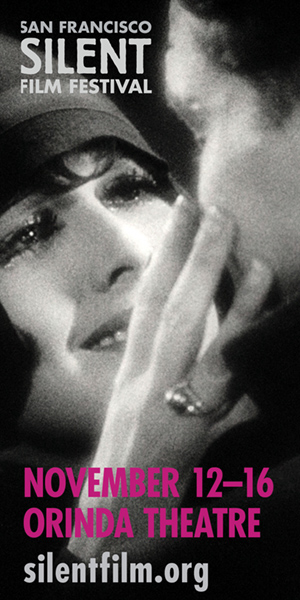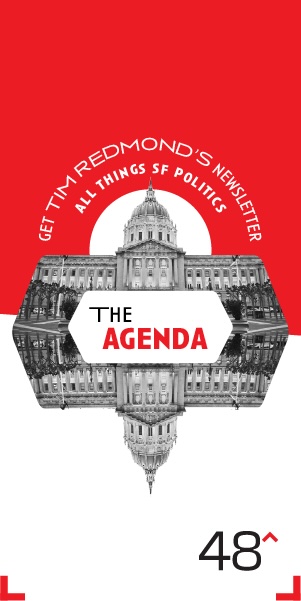MOVIES The 62nd SFFILM Festival kicks off next week, and as usual there’s a plethora of movies to choose from (see our preview here). In particular, there are several documentaries and features dealing with geopolitical issues, including nuclear secrets, Perestroika, Syrian refugees, and the recent history of Afghanistan. Below are our reviews.
RED JOAN
The British have always had, well, a different perspective on the atomic bomb spies of the 1950s. When upper crust, Cambridge educated spy Kim Philby fled to Moscow, one of his defenders was supposed to have intoned in a posh accent, “If Philby gave secrets to the Bolshies, then he had a damn good reason!”
Now we have a new take on the old conundrum as seen in the feature film Red Joan. Judi Dench plays Joan Stanley, an elderly librarian who is suddenly arrested for allegedly stealing atomic secrets years earlier. The film intercuts the modern day MI5 interrogation with scenes from the 1930s and 40s when we meet Joan as a young woman, portrayed by the very talented Sophie Cookson.
A central mystery soon develops: Was Joan a spy? And if so, why?
Director Trevor Nunn and screenwriter Lindsay Shapero cleverly intermix Joan’s personal story with the politics of the era. She is an intelligent, Cambridge graduate with a background in physics. But she gets hired as a secretary to a scientist researching nuclear fission at a top-secret lab. Had she been male, she may well have gotten credit for developing nuclear fission.
We see Joan grow emotionally and intellectually from a naïve college student to a politically committed woman. She falls in love with a fellow Cambridge grad who happens to be a Russian agent. Hey, nobody’s perfect.
The film reminds us that times were different back then. The USSR, US, and UK were allied against fascism. Churchill had promised technological assistance to Stalin, according to the spies, and then reneged on the deal. “it’s not really stealing,” argues Leo, Joan’s lover and spymaster. “It’s sharing.”
Joan doesn’t fall for such balderdash. She supported building an atomic bomb because the allies thought the Nazis were developing one. After seeing the horrors of Hiroshima, Joan, like many nuclear scientists in the US and UK, questioned how atomic weapons would be used in future wars.
Help us save local journalism!
Every tax-deductible donation helps us grow to cover the issues that mean the most to our community. Become a 48 Hills Hero and support the only daily progressive news source in the Bay Area.
“I love my country,” she says. “If both sides had the bomb, neither would use it.”
She makes a valid point, and by the end of the film, Joan emerges as an unlikely hero.
Red Joan gets clunky in the middle, some of the spy ring characters come straight out of central casting, and an escape from Britain at the end beggars belief. But the film is based on the real life story of the “Granny Spy” who was arrested in the late 1990s in Britain. She never served time due to her age.
Was justice served? You decide.
Red Joan
Sat, Apr 13 at 4pm, Castro Theater
More info here.
CENTRAL AIRPORT THF
The German government handed over Berlin’s iconic Tempelhof Airport to be used as public space in 2008. Seven years later it became home to thousands of refugees from Syria, Afghanistan and other war torn countries.
Berlin-based director Karim Aïnouz spent a year filming Central Airport THF, telling the refugees’ stories. The filmmaker clearly wanted to show the humanity of the refugees and counter some of the right-wing propaganda denouncing refugees as criminals seeking to take away German jobs. I just wish the results had been as successful as the intent.
To its credit, the documentary shows how a refugee center can be run. Unlike the US government refugee centers I’ve visited, the Tempelhof complex is clean, airy and organized to respect refugee dignity. The massive hangars are divided into private living spaces. Communal kitchens serve culturally appropriate food, doctors treat patients and volunteers teach German language classes.
We hear refugee complaints. Why do they have blankets over dwelling entrances rather than doors? (Locked doors could be a fire hazard, according to authorities.) Some of the young men refer to the “shitty food.” But such complaints are minor compared to some US facilities where families are forcibly separated and children are locked in cages for most of the day.
We meet an 18-year-old Syrian, Ibrahim Al Hussein, who is waiting to be granted refugee status and thus move out of the airport. Time passes very slowing as the young man meets friends, visits the doctor and smokes a water pipe. The film pacing is slow, recreating the atmosphere of Tempelhof itself.
But there’s a limit to audience patience. Central Airport has no compelling personal stories, no dramatic reveals, nor any hint of the political controversy caused by the influx of refugees into Germany.
Central Airport provides interesting information on how a humanitarian refugee effort can operate, but little to recommend it as cinema.
CENTRAL AIRPORT THF
April 13 at 6:15pm, Creativity Theater
April 17 at 7pm, BAMPFA
April 22 at 1pm, Roxie Theater
More info here.
MEETING GORBACHEV
If you want to see long, tedious praise of former Soviet leader Mikhail Gorbachev, then the documentary Meeting Gorbachev is made for you. Otherwise stay home.
Directors Werner Herzog and Andre Singer have managed to deify Gorbachev without providing personal insight, and they describe his political career without offering credible analysis. And they take an agonizing 90 minutes to do it.
To be fair, the film reflects a commonly held view in the west. For documentarian Herzog, who both wrote and narrated the film, Gorbachev was a great hero because he oversaw the elimination of the USSR, allowed freedom in Eastern Europe and brought democracy to Russia.
But in Russia and Eastern Europe today, Gorbachev is widely scorned. Vladimir Putin and rightist leaders in Europe came to power, in part, because of the failings of Gorbachev and his successor Boris Yeltsin. But the film presents no serious criticism of Gorbachev. Instead Herzog lards on admiration for his subject from the very beginning.
“Everything about Gorbachev was genuine,” he informs us, referring to their three interviews in Moscow.
The use of archival footage during Gorbachev’s early years is the most interesting part of the film. We see a clip of Gorbachev participating in a very funny college satire of American swing dancing where “decadent” Americans throw their partners around, sometimes just dropping them on the floor.
Soviet leaders faced serious problems in agriculture production in the 1950s and 60s. Unlike other party bureaucrats, Gorbachev met with peasants in the countryside, sometimes arriving by foot when transport broke down.
But the parts of the documentary that should be intriguing become summary recitations of the rise and deaths of various Soviet leaders in the 1970s. Wikipedia provides more insight. We never learn why the old system failed other than it was evil communism.
When Gorbachev came to power in 1985, he proposed radical reforms. Perestroika aimed to restructure the economy; glasnost was supposed to democratize the political system. But those reforms went awry, as even Gorbachev now admits.
At no time does Herzog show Gorbachev’s impact on ordinary Soviet citizens. Herzog devotes exactly one sentence to the topic, “He is a lonely man and considered a traitor by the Russian people.”
Wouldn’t viewers be interested to know why? The left hates Gorbachev because he wrecked Soviet style socialism; the right hates him because he dissolved a once strong nation. Those views deserve a fair hearing. Instead, Herzog and Singer immediately cut to a long homage to the untimely death of Gorbachev’s wife Raisa.
Given Herzog’s access to the former Soviet leader and prominent western politicians, Meeting Gorbachev could have been an insightful documentary. Instead we get hagiography disguised as history.
MEETING GORBACHEV
Fri, Apr 19, 9:00 pm, Creativity Theater
WHAT WE LEFT UNFINISHED and KABUL, CITY IN THE WIND
This year’s SF Film Festival features two seemingly contradictory films from Afghanistan. One examines the role of cinema during the time of communist party rule from 1978-91. The other eschews explicit politics, focuses on the lives of ordinary Afghans and still manages to show the impact of war.
Documentarian Mariam Ghani, who made What We Left Unfinished, digs into Afghanistan’s state cinema vaults to unearth unfinished feature films shot when leftist governments were in power, backed by Soviet occupation.
She interviews directors and actors who alternately describe those years as a “golden time” for Afghan cinema or an era of propaganda films with harsh censorship. During the interviews we see seemingly random clips from five old, never completed feature films. But as the documentary progresses, we realize Ghani is actually constructing a whole new feature film using the clips to illustrate the film makers’ memories and political perspectives.
It’s a wonderful concept, but like the Afghan war itself, never really works out. To hear the directors’ talk, they had created the equivalent of Afghanistan’s Citizen Kane and Casablanca. Then we see the actual clips.
Like the commercial movies of Iran and India, these Afghan films featured lots of close in zooms, anguished looks and
potboiler plots. One film portrays the forbidden love of a boy and girl from different ethnicities. Romeo and Juliet it’s not.
A knife fight scene in another movie features dubbed in swoosh sounds that make the turbaned antagonists look like samurai stuck in the Khyber Pass.
The documentary is far more interesting when it explores the role of state-sponsored cinema. In 1978 one faction of the pro-Soviet communist party launched a coup in Afghanistan. The new government established a state run film company in which, according to some interviewees, actors and directors enjoyed great prestige.
They had virtually unlimited budgets so long as the films praised the new system. One feature film, April Revolution, even starred the country’s new ruler, Hafizullah Amin and his family.
Amin was overthrown in another coup, and in 1979 the Soviet Union occupied the country. The film makers associated with Amin feared for their lives.
One director notes that “if you have politicized cinema, when that government ends, so does the cinema.”
Downfall, made during the communist era, exposed the role of the US-backed mujahedeen and Pakistani intelligence service in promoting the heroin trade. Propaganda yes—but also true—as I’ve written about numerous times since 1992.
However bad cinema may have been before 1991, it ceased to exist altogether when the mujahedeen launched the civil war, which eventually led to the Taliban seizing power. Leftist and virtually all film makers fled the country. The Taliban banned cinema and destroyed 200-300 films. What We Left Unfinished is worth seeing — if for no other reason — to remind us of what happens to the arts when US-backed, reactionary religious forces come to power.
WHAT WE LEFT UNFINISHED
Thurs, Apr 11 at 3:00 pm, Creativity Theater
Sun, Apr 14 at 3:15 pm, BAMPFA
Tues, Apr 16 at 8:30 pm, YBCA Screening Room
More info here.
The feature film Kabul, City in the Wind is the polar opposite of What We Left Unfinished. It eschews overt politics in favor of presenting the lives of ordinary Afghans. Yet we never really escape the reality of the brutal war.
Director Aboozar Amini shot the feature over three years with a hand-held camera, using non-professional actors in Kabul. The film’s slow and deliberate pacing recreates the lives of bus drivers, mechanics, carpet weavers and other ordinary Afghans rarely seen in the US – whether in journalism or on film.
The politics of war are explained as part of everyday life. A former soldier has “the talk” with his eldest son, probably about 13 years old. The father explains the son must never go to crowded areas where suicide bombers may lurk. “It’s too dangerous,” he says.
Amini appeared to use little or no script. He shoots his actors from behind and then dubs in dialogue later. In other scenes he fills the screen with his character’s faces and has them explain their difficult lives. This technique gives viewers a street-level feel for Kabul.
All the major characters are men. Only one woman has a brief speaking role. That reflects the on-going inequality and social conservatism even for a film shot by a director living in Europe.
Kabul, City in the Wind can be hard to watch. Many American viewers will grow tired of the slow pacing, the lack of an obvious plot and dramatic arc. However, the feature provides an interesting slice of life view of today’s Afghanistan.
KABUL, CITY IN THE WIND
Thu, Apr 11 at 5:30 pm, BAMPFA
Fri, Apr 12 at 8:30 pm, Creativity Theater
Sat, Apr 20 at 1:00 pm, YBCA
More info here.
Reese Erlich writes about foreign affairs, jazz and cinema for 48Hills. He has reported from Afghanistan since 1992.





